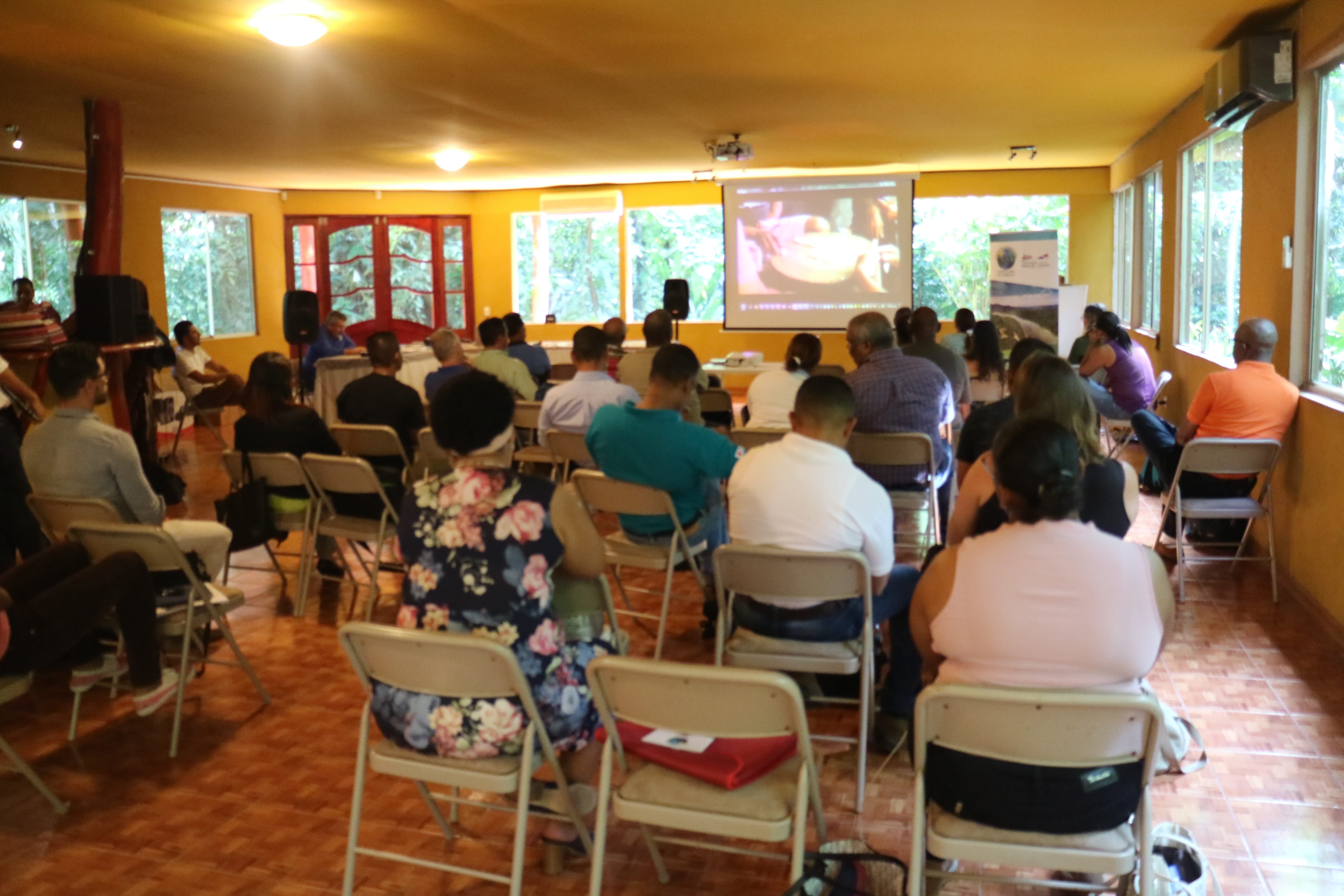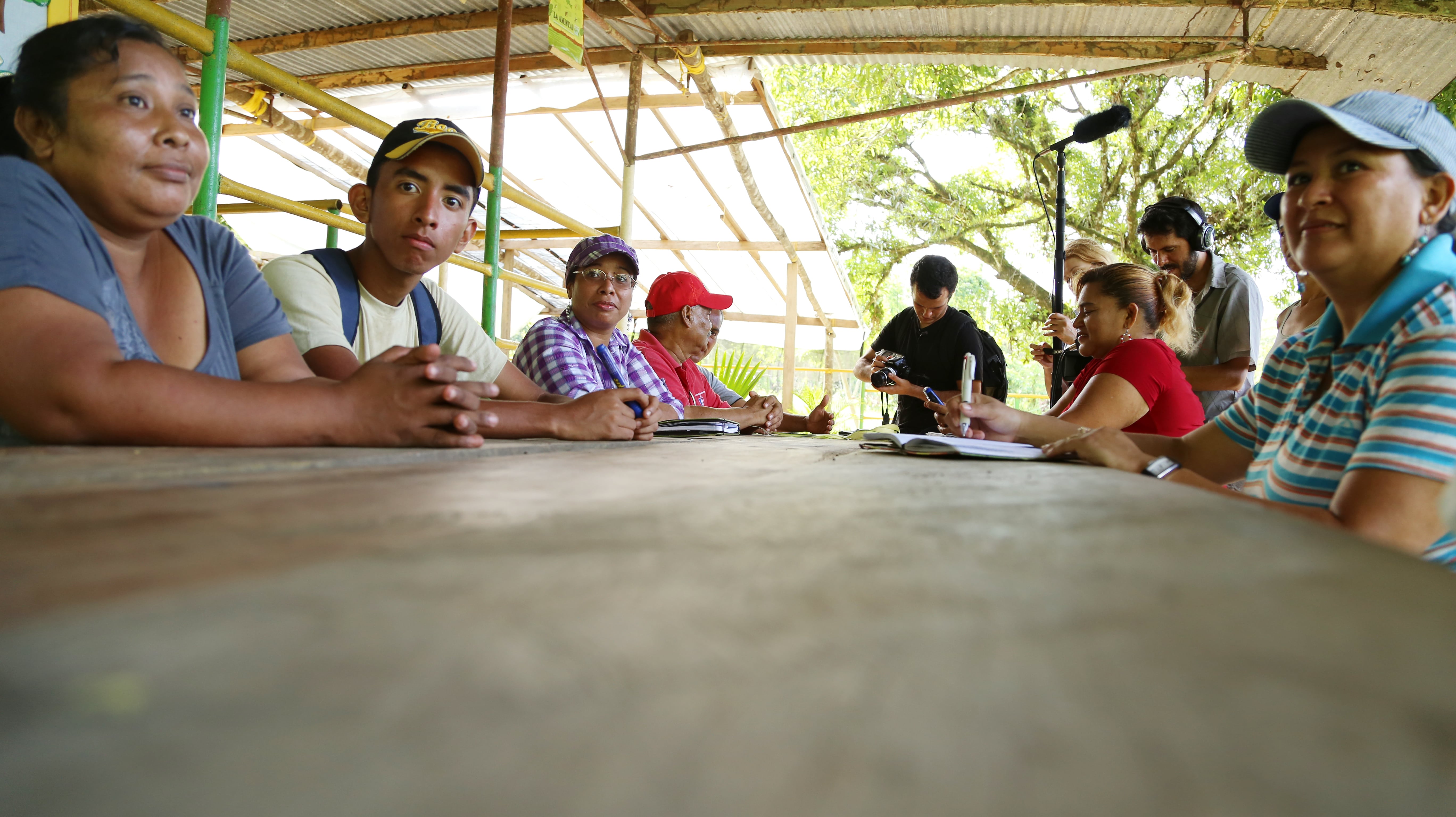



La promotion des mesures d'EbA avec un niveau élevé d'implication communautaire et de liens binationaux a été un moyen efficace de parvenir à une plus grande interaction entre les acteurs communautaires, municipaux et nationaux, ainsi qu'entre pairs (réseau de producteurs résilients ; rencontre avec le gouvernement local). Les résultats sont, d'une part, une plus grande responsabilisation au niveau local et, d'autre part, l'extension des mesures d'EbA à la fois verticalement et horizontalement. Des contributions sont ainsi apportées à l'institutionnalisation de l'EbA et à la création des conditions de sa durabilité. La reproduction du modèle de ferme intégrale est le fruit d'un travail en réseau entre les producteurs, les communautés et les autorités locales, et d'un projet régional avec la Commission binationale du bassin de la rivière Sixaola (CBCRS), qui a fourni le financement. La foire de l'agrobiodiversité, le travail des producteurs en réseau et les événements binationaux de reboisement, qui sont désormais tous placés sous l'égide d'institutions locales et nationales, ont été d'importantes forces mobilisatrices du changement et des espaces d'échange et d'apprentissage. Sur le plan vertical, l'expansion de l'EbA a consisté à travailler avec le CBCRS pour intégrer l'EbA dans le plan stratégique de développement territorial transfrontalier (2017-2021) et avec le MINAE dans la politique nationale d'adaptation au changement climatique du Costa Rica.
- Une grande partie du travail a été accomplie grâce au rôle de canalisation et d'orientation du CBCRS (créé en 2009) en tant que plateforme binationale pour la gouvernance et le dialogue, et de l'ACBTC en tant qu'association de développement local. Tous deux défendent les intérêts locaux et territoriaux et connaissent les lacunes et les besoins qui existent dans la région. Grâce à ce projet, ils ont pu relever les défis auxquels les communautés sont confrontées et améliorer la gouvernance dans le bassin, en promouvant une approche écosystémique et une large participation des acteurs.
- La coordination des efforts par le biais du CBCRS a montré qu'il est plus rentable de travailler avec les structures et les organes de gouvernance existants, dotés de pouvoirs et d'intérêts dans la bonne gestion des ressources naturelles et dans la représentation appropriée des acteurs clés, que de chercher à créer de nouveaux groupes ou comités pour traiter les questions liées à l'EbA.
- L'amélioration de la gouvernance à plusieurs niveaux et multisectorielle est un élément fondamental d'une adaptation efficace. À cet égard, il convient de souligner le rôle des gouvernements infranationaux (tels que les municipalités), qui ont un mandat de gestion du territoire, mais aussi des responsabilités dans la mise en œuvre des politiques et des programmes d'adaptation nationaux (par exemple, les CDN et les PAN).
- L'identification de porte-parole et de leaders (parmi les hommes, les femmes et les jeunes) est un facteur important pour encourager efficacement l'adoption et la mise à l'échelle de l'EbA.